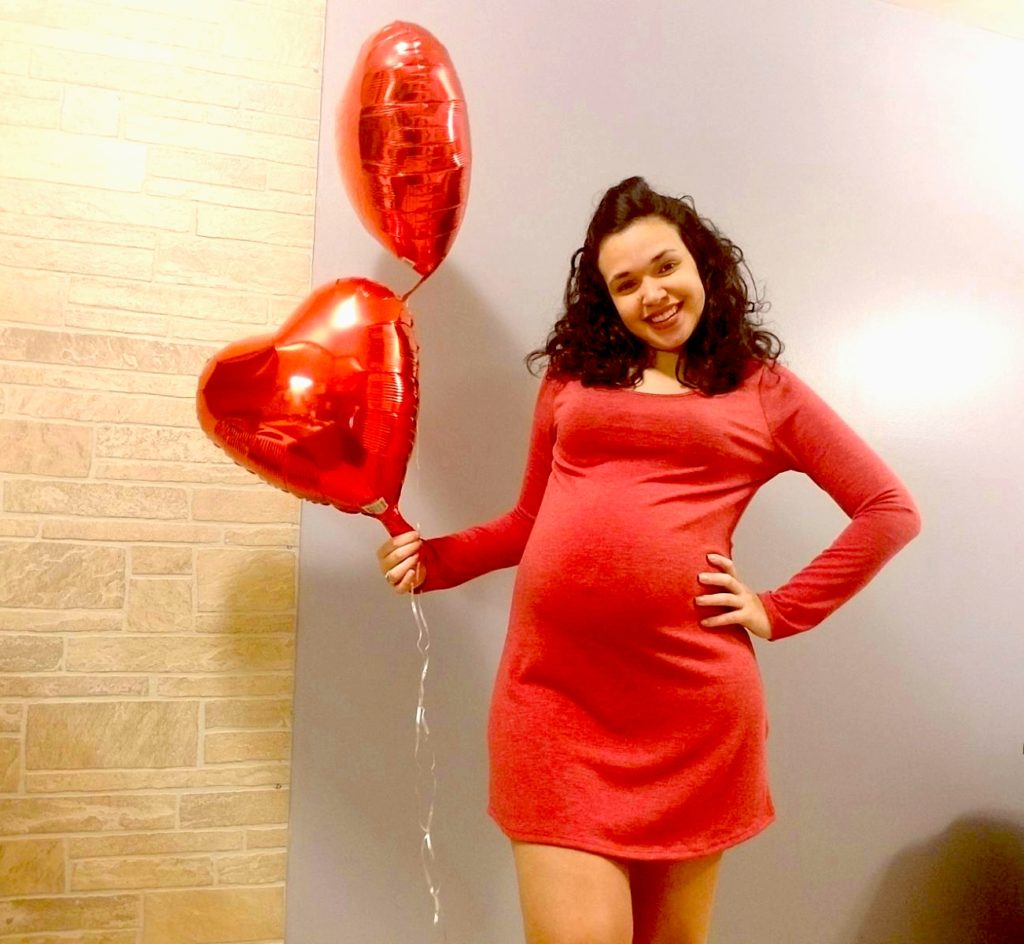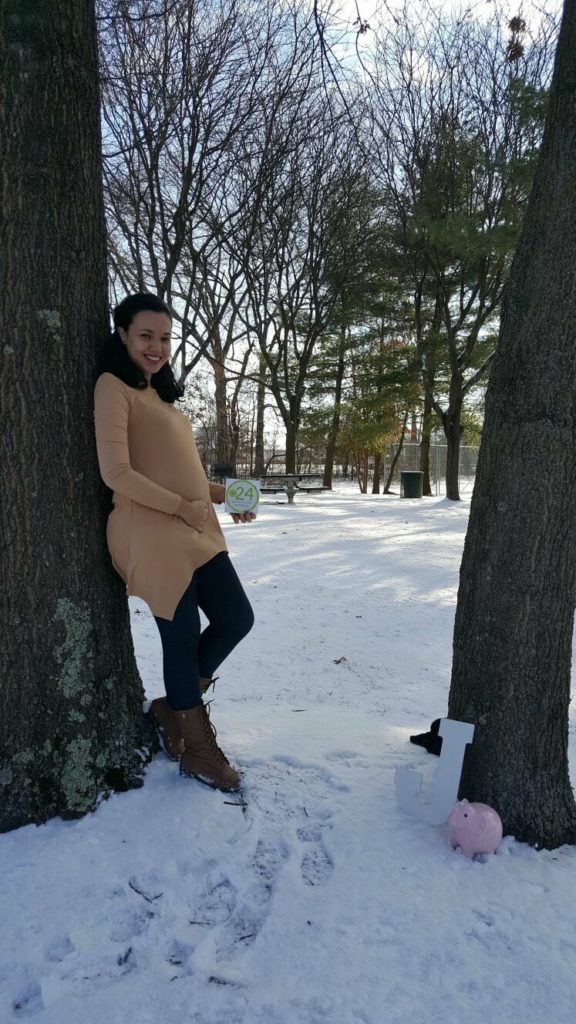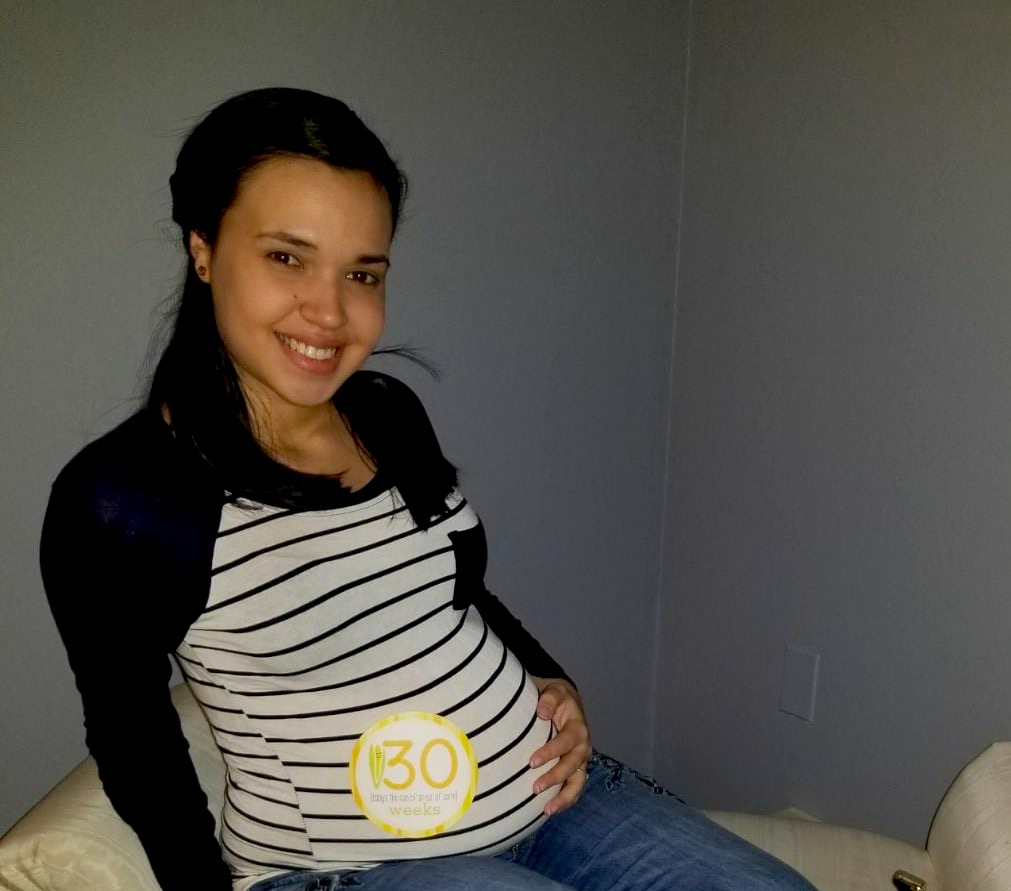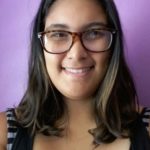
Photo courtesy of Aidamarys Torres Pardo
Leer en español
After Hurricane Maria, Aidamarys Torres Pardo, a 20-year-old Puerto Rican student, had to move to Hatfield, Pennsylvania in order to save her daughter’s life. Torres suffers from Homocystinuria, a genetic disease that disrupts the body’s metabolism and has multiple ramifications that can worsen with pregnancy.
Since she was three years old, Torres has had more than seven risky operations to help this condition which affects the organs in her body. Her doctors told her that the condition lowers the chances of being able to have a child. But despite the bad diagnosis, Torres and her partner Jonathan were able to have their first daughter, Janaiah, who was born in good health. Thanks to the medical care she was able to receive in Pennsylvania, her condition is now stable. She was interviewed from her home in Pennsylvania.
How did your life change after Hurricane Maria swept through?
Hurricane Maria complicated everything. On the one hand, I had only seen the gynecologist once and the laboratories were not open due to the lack of electricity. I had to get lab tests so I could take the results to the doctor’s office on my next appointment, which was September 25, 2017. I was visiting the gynecologist’s office week after week and couldn’t get anything. I was getting desperate.
My house is also in a flood-prone area and we didn’t have a generator so I had to protect myself from the mosquitos, due to the high incidence of Zika.
Obviously, I got really sad when I couldn’t see my baby with the sonogram due to the lack of power. I only listened to the heartbeat. And that was how I started becoming more and more convinced about traveling.
The hurricane brought me closer together with my family, with my partner. Family nights were for playing Bingo with pennies, and I would say that I matured and I really learned to appreciate time with my family.
How was your family affected by you leaving?
My family, especially my mom who I lived with, was sad. But they understood that I would have all the necessary care here [in the United States] for my health and the baby’s. I was 17 weeks [pregnant] when I came and I had only seen the gynecologist at eight weeks and 5 days [into the pregnancy].
Who has been your guide through this process and why?
My guide, who takes me to my appointments and took me to get help, is Jonathan’s brother’s wife, with whom we lived with for two months when we got here from Puerto Rico.
What did it mean for you to give birth?
My life now has meaning. I am a happy person. She is a miracle because I was told I couldn’t have babies due to my condition, Homocystinuria.
Now that you had the baby, what will happen to your academic future?
I was able to make arrangements with four of the six professors and I was able to finish four classes online. My plan is not to quit studying. I did not register this (past) semester because my pregnancy was categorized as high risk and I had two to three appointments a week. Additionally, I was due to give birth in March and I wasn’t going to be prepared for finals. I do have plans to continue in August, online if possible.
Will you go back to the island when you ensure that your health and the baby’s are safe?
We have everything here in Pennsylvania, after only two months of having moved here we were able to move out of Jonathan’s brother’s place. We have our own apartment and our humble little things. Jonathan has a good job with a good salary, something that didn’t happen in Puerto Rico. Here he makes in a week what in Puerto Rico he would earn in two. For the moment, and for a while, we plan to stay here.
De Puerto Rico a Pensilvania: La travesía de una madre embarazada para salvar a su bebé
Desde que Aidamarys Torres Pardo, puertorriqueña de 20 años, viajó a Hatfield, Pensilvania, para salvar a su hija después del huracán María, su vida cambió. Torres padece de homocistinuria, una enfermedad genética que trastorna el metabolismo y tiene múltiples síntomas que pueden verse agravados con el embarazo.
Torres ha tenido que someterse a más de siete operaciones riesgosas en el transcurso de su vida y la enfermedad ha afectado órganos de su cuerpo desde que tenía tres años. Sus médicos le dijeron que la enfermedad minimiza la probabilidad de tener un hijos, pero a pesar de los malos diagnóstico, Torres y su pareja Jonathan, pudieron tener a su primera hija, fue Janaiah, que nació saludable. Gracias a los medicamentos que le recetaron en Pensilvania, ahora su condición es estable. Torres fue entrevistada desde su casa en Pensilvania.

Photo courtesy of Aidamarys Torres Pardo
¿Cómo cambió tu vida tras el paso del huracán María?
El huracán María lo complicó todo. Por un lado, solo había visto al ginecólogo una sola vez y los laboratorios no estaban abiertos por falta de electricidad. Tenía que hacerme unos análisis para llevar a la oficina del médico la próxima cita, que era el 25 de septiembre de 2017. Estuve visitando la oficina del ginecólogo semanas corridas y no conseguía nada. Ya estaba entrando en desesperación.
Por otro lado, mi casa es en zona inundable y no teníamos una planta eléctrica así que tenía que cuidarme mucho de los mosquitos por la alta incidencia de Zika.
Obviamente me puse triste por no poder ver la bebé en el sonograma por falta de luz, solo escuché los latidos. Y fue así como poco a poco me fui convenciendo de viajar.
El huracán me unió mucho a mi familia, a mi pareja. Las noches en familia eran para jugar bingo con chavitos, y yo diría que adquirí más madurez y realmente aprendí a valorar el tiempo en familia.
¿Cómo se vio afectada tu familia por tu partida?
Mi familia, especialmente mi mamá con quien vivía se entristeció, pero entendieron que por mi salud y la del bebé acá [en Estados Unidos] iba a tener las atenciones necesarias. Yo tenía 17 semanas cuando me vine y solo había podido ver al ginecólogo a las ocho semanas y cinco días.
¿Quién ha sido tu guía en este proceso y por qué?
Mi guía, la que me lleva a las citas y me llevó a conseguir las ayudas, es la esposa del hermano de Jonathan con quien vivimos cuando llegamos de Puerto Rico por dos meses.
¿Qué significó para ti haber dado a luz?
Mi vida ahora tiene sentido. Soy una persona feliz. Ella es un milagro ya que por mi condición de Homocystinuria me habían dicho que quizás no podía tener bebés.
Ahora que tuviste a tu bebé, ¿qué pasará con tu futuro académico?
Logré hacer arreglos con cuatro de seis profesores y pude terminar cuatro clases en línea. Mi plan no es dejar de estudiar. Este semestre no me matriculé porque mi embarazo estaba catalogado como alto riesgo y tenía dos y tres citas por semana. Además de que daba a luz ahora en marzo y no iba a estar preparada para finales. Sí tengo pensado continuar ahora en agosto, en línea de ser posible.
¿Regresarás a la Isla cuando te asegures que tu salud y la de tu bebé estarán a salvo?
Acá en Pensilvania lo tenemos todo, ya a los dos meses de estar acá pudimos independizarnos del hermano de Jonathan. Tenemos nuestro apartamento y, humildemente, nuestras cositas. Jonathan tiene un buen trabajo con un buen sueldo, algo que en Puerto Rico no pasaba — aquí cobra en una semana lo que allá cobraba en dos semanas. Por el momento, y por un buen tiempito, tenemos planes de quedarnos acá.
This story was written by Imalay Cruz.
The story is part of a collaboration between Feet in 2 Worlds and the journalism program at Universidad del Sagrado Corazón in San Juan, Puerto Rico. Translated from the original Spanish by John Pink.
Fi2W is supported by the David and Katherine Moore Family Foundation, the Ralph E. Odgen Foundation, the J.M. Kaplan Fund, an anonymous donor and readers like you.




